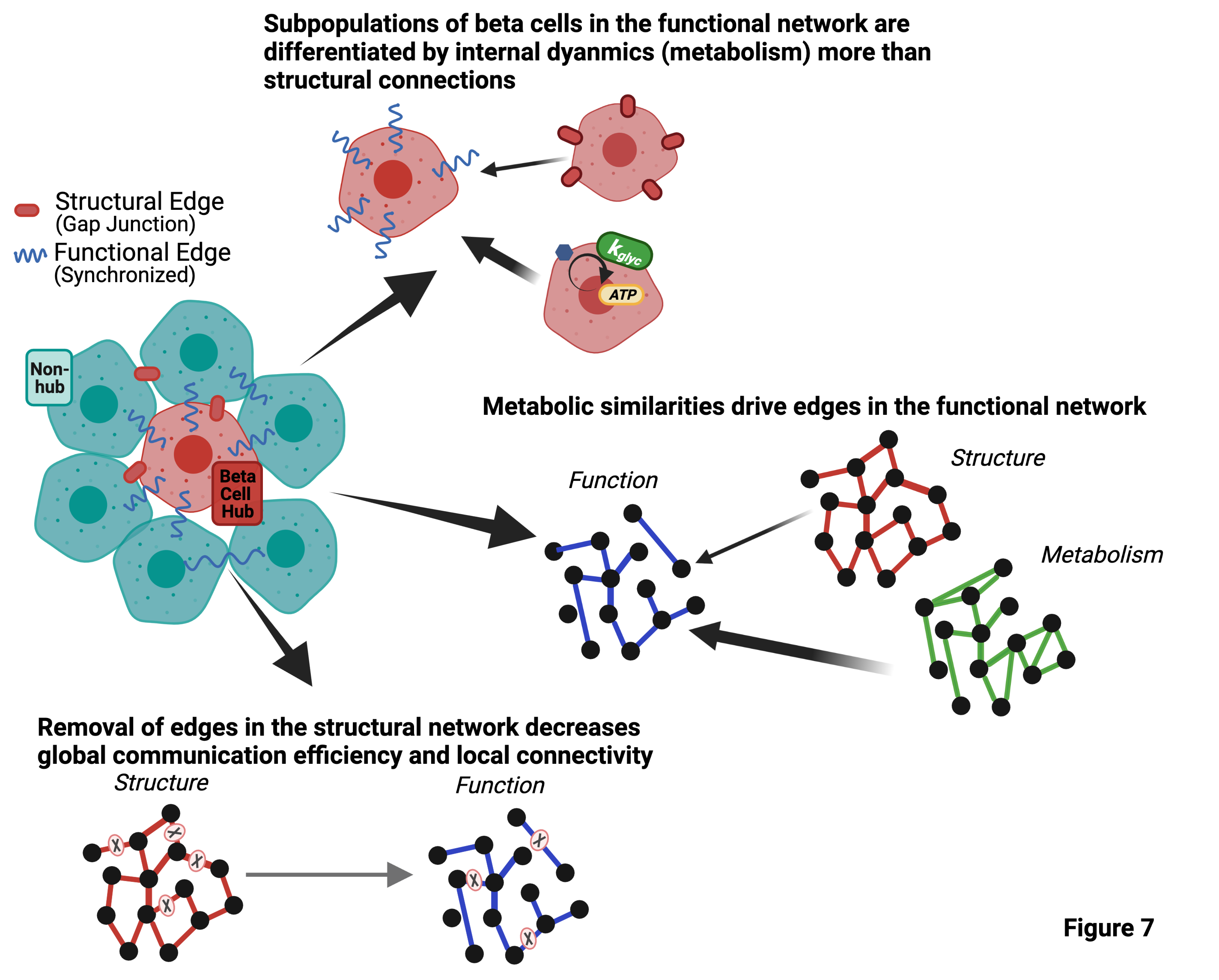Highly heterogeneous beta-cells within the islet are electrically coupled to synchronize their oscillations and secrete insulin in a pulsatile fashion. This pulsatility is disrupted in diabetes. Studying synchronization of calcium oscillations, previous work has suggested that highly synchronized cells have disproportionate influence over the islet and are targeted in diabetes. In this paper, we use network theory to disprove the common assumption that synchronization directly indicates structural connectivity and show that other factors must be taken into account when utilizing network theory to study network breakdown.
Discovering Mechanisms Underlying Emergent Islet Subpopulations in Health and Diabetes
